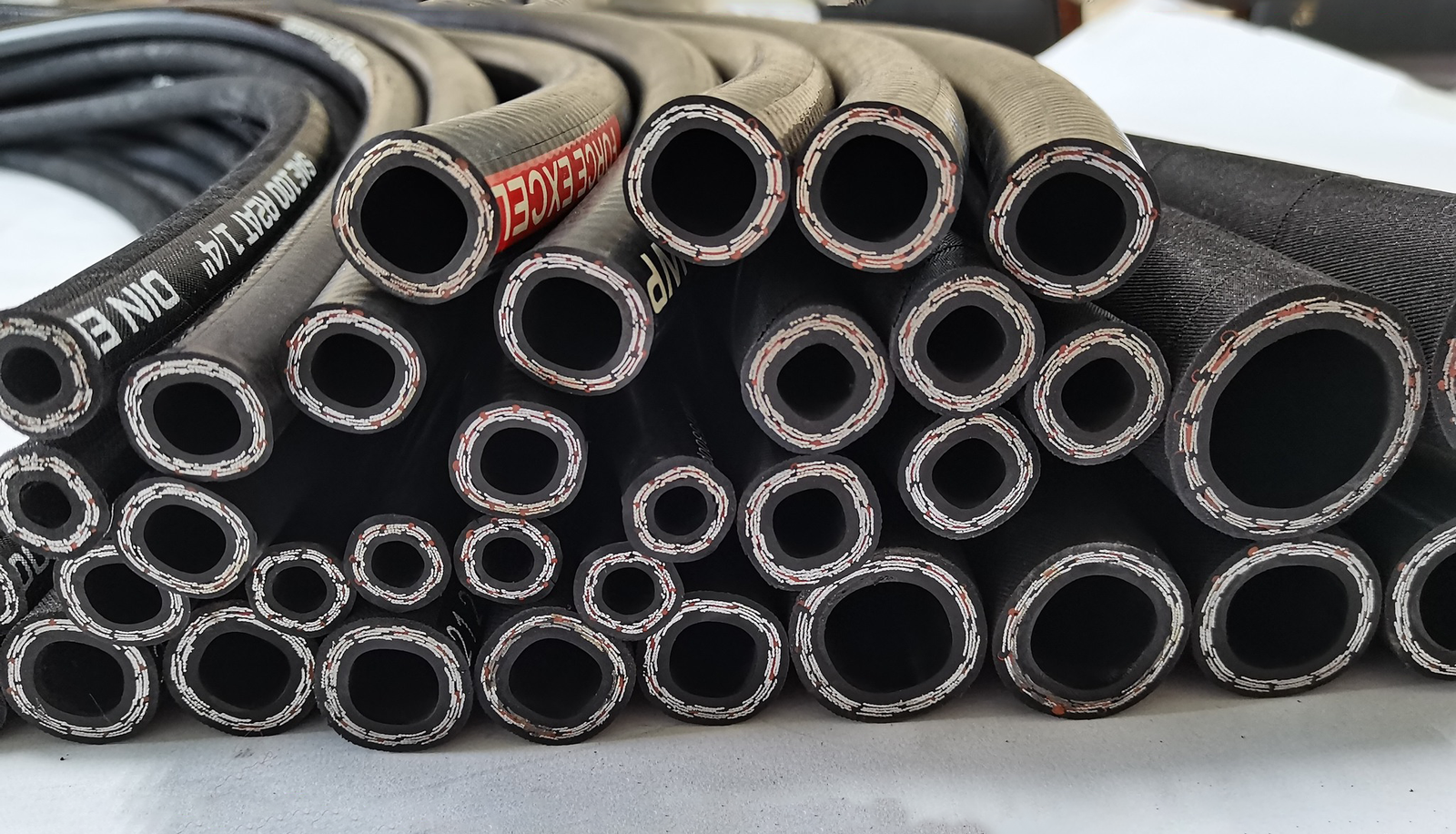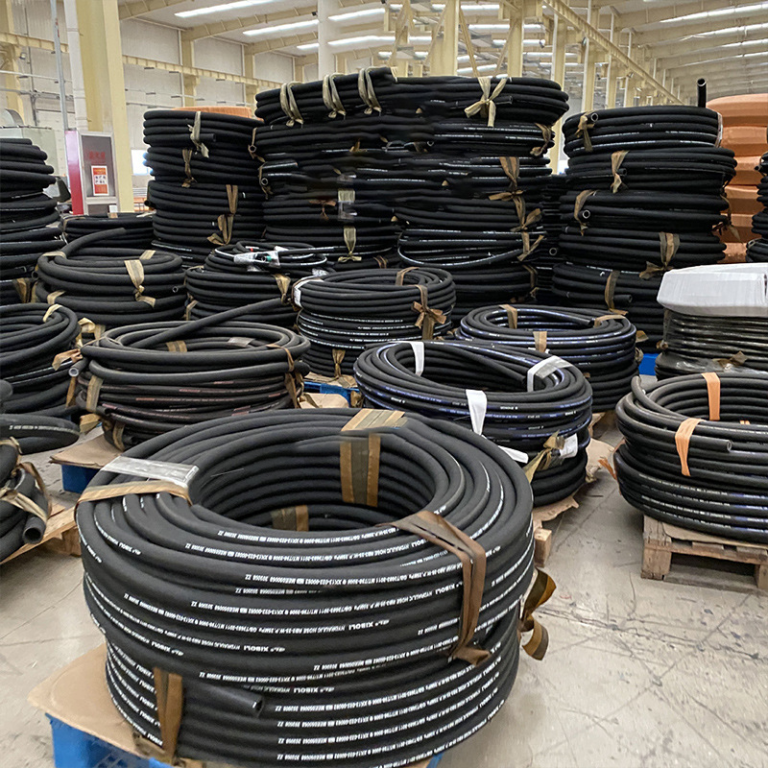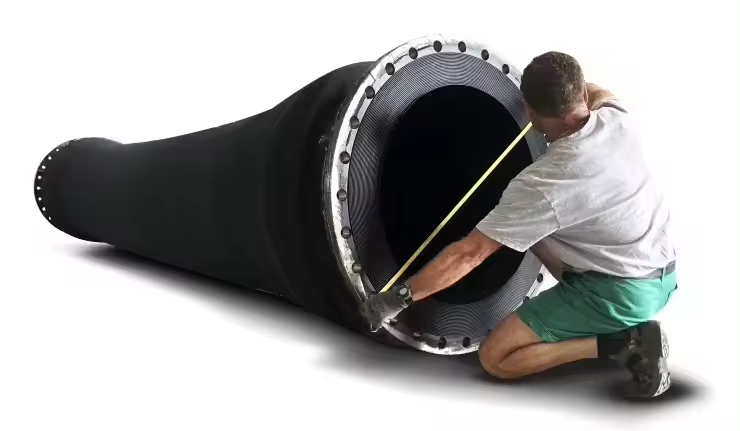Types, uses, and precautions of hydraulic hoses
Hydraulic Hoses:
Hydraulic hoses, also known as hydraulic oil pipes, hydraulic hoses, high-pressure hoses, hydraulic pipes, steel wire high-pressure pipes, steel wire braided hoses, and steel wire wrapped hoses, are generally divided into steel wire braided hydraulic hoses and steel wire wrapped hydraulic hoses. Hydraulic hoses are mainly composed of liquid resistant inner rubber layer, middle rubber layer, 2 or 4 or 6 layers of steel wire winding reinforcement layer, and outer rubber layer. The inner rubber layer has the function of bearing pressure on the conveying medium and protecting the steel wire from erosion, while the outer rubber layer protects the steel wire from damage. The steel wire layer is the skeleton material that plays a reinforcing role.
medium temperature:
Oil temperature ranges from -40 degrees to 100 degrees; Air temperature ranges from -30 degrees to 50 degrees,; Water temperature ranges from -0 degrees to 80 degrees.
medium:
Perform hydraulic power transmission or pipeline high-pressure media such as water, gas, oil, etc., to ensure liquid circulation and transmission of liquid energy.
The most common types of hydraulic hoses include:
Braided hydraulic hose ———–This type of hydraulic hose is composed of a single layer of braided steel wire, providing support and reinforcement for the hose. Braided hydraulic hoses are typically used for low to medium pressure applications.
Spiral hydraulic hose ———–This type of hydraulic hose is composed of multiple layers of spiral wound steel wires, providing enhanced support and reinforcement for the hose. Spiral hydraulic hoses are typically used for high-pressure applications.
Multi helix hydraulic hose ————- This hydraulic hose is composed of multiple layers of spiral wound steel wires, providing greater support and reinforcement for the hose. Multi helix hydraulic hoses are typically used for ultra-high pressure applications.
Thermoplastic hydraulic hose ———– This type of hydraulic hose is made of thermoplastic material and can withstand high pressure and high temperature. Thermoplastic hydraulic hoses are typically used for applications that require flexibility, wear resistance, and chemical resistance.
PTFE hydraulic hose ———– This hydraulic hose is made of PTFE (polytetrafluoroethylene) material, which has excellent chemical and temperature resistance. PTFE hydraulic hoses are typically used for applications that require chemical resistance.
Hydraulic hoses are used in a wide range of industries and applications, including:
1. Architecture – Hydraulic tower tops are used for construction equipment such as excavators, bulldozers, and earthmoving machines to provide power for hydraulic systems that lift heavy objects and move soil and particulate matter.
2. The agricultural hydraulic console is used for agricultural equipment, such as tractors, harvesters and spray, to provide power for the hydraulic system of operating machinery.
3. Manufacturing hydraulic control consoles provide power for hydraulic systems that control the movement and operation of machinery such as presses, milling machines, and lathes.
4. Transportation – The hydraulic control console provides power for the hydraulic systems that operate the wheels, suspension, and steering of equipment such as transport trucks, buses, and trains.
5. Ship – Hydraulic tower tops are used for ship equipment, such as ships, vessels, and offshore equipment
matters needing attention:
一、 Tube inner diameter: The inner diameter of the upper part.
二、 When using and designing rubber counters, the following points should be noted:
1. The bending radius of the hose should not be too small, generally not less than the value specified in the “Technical Characteristics of Hydraulic Hose Assembly”. The connection between the rubber hose assembly and the pipe joint should have a straight section, and the length of this section should not be less than twice the outer diameter of the pipe.
2. The length of the hose assembly should take into account that the hose will undergo shrinkage deformation after being filled with pressure oil, with a general shrinkage of 3-4% of the pipe length. Therefore, when installing the hose assembly, it is not allowed to be in a taut state.
3. The rubber hose assembly should be installed to ensure that no twisting deformation occurs. The joint axis of the hose should be placed as close to the plane of motion as possible to avoid damage to the hose when both ends move towards each other.
三、 Safety measures: To ensure the safe and reliable use of the hose assembly, special attention should be paid to the following matters:
1. Pressure: The working pressure specified for the hose should generally not be less than the maximum system pressure, and is only allowed to be increased by 20% in infrequent use; For those who use frequently and frequently bend and twist, it should be reduced by 40%. If the impact pressure of the system is higher than the specified working pressure of the hose, it not only reduces the service life of the hydraulic hose, but may also lead to personal and equipment accidents.
2. Temperature: The fluid temperature and ambient temperature, whether stable or instantaneous, must not exceed the temperature resistance limit of the hose. Temperatures lower or higher than the recommended temperature of the hose can reduce hose performance, cause hose damage, and lead to leakage.
3. Fluid compatibility: The fluid in the hose should comply with the regulations specified in the “purpose” of the product sample. Exceeding the regulations cannot guarantee the service life and safety of the hose. Hydraulic hose
4. Appropriate end connection: Nut connection is widely used due to its convenience and low cost, but in cases of high vibration, nut loosening should be fully considered and flange connection should be adopted.





